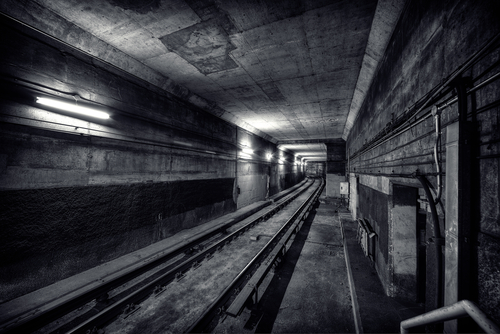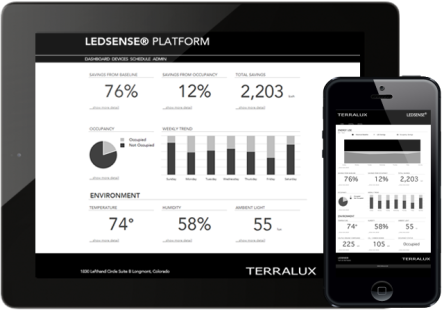Beneath the cobblestones of New York’s Lower East Side, technology is about to present a curious lesson to the world—plants and trees can live a healthy life. We’re not talking about some new lab-modified plant hybrid, but rather about the possibility to light the underground with sunlight through an intricate system of solar panels. The Lowline idea had first seen the light of ration back in 2009 when its creators, Dan Barasch and James Ramsey, had the fantastic ideato combine two plans that involved the underground: One to grow plants underground, and the other to install underground art in the New York City subway system. Introduced to the one-acre former Williamsburg Bridge Trolley Terminal, buried below Delancey Street in Manhattan and untouched since 1948, the two have seen more than just an abandoned trolley terminal; they’ve seen an underground park in one of the world’s most dense urban environments. And that was the beginning. In their vision, the one-of-a-kind park would be nourished by a remote skylight, a type of solar technology proposed by James Ramsey, the principal of Raad Studio. After researching a series of alternatives including transportation of sunlight through fiber optic cables, the duo has been contacted by SunPortal, a three-year-old company based in the UK and South Korea that promotes “daylighting technology,” an emerging category of lighting that uses a complex series of mirrors and focusers able to transport daylight into the depths of the 112-year-old cavern. In this approach, the process will begin on the street level above the park, with huge sunlight collectors and parabolic dishes that will collect and concentrate sunlight. The devices would be made from silver and glass to help efficiently concentrate and reflect light and repel dust that would otherwise dim the intensity of the lumens. In other words, sunlight would pass through a glass shield above the parabolic collector, reflected and gathered at one focal point, and directed underground. There, it would be transmitted onto a reflective surface on the distributor dish underground, transmitting that sunlight into the space. SunPortal claims their technology can carry sunlight 650 feet, deeper than needed for the Lowline project. But it’s more than just a game of positioning mirrors. This technology is designed to transmit the necessary wavelengths of light to support photosynthesis, so that plants and trees can grow. Moreover, during the hours of sunlight, the space wouldn’t need electricity. A prototype of the technology was presented at the Imagining the Lowline exhibit in September 2012 in an abandoned warehouse in the same part of the city as the location chosen for Lowline. 11,000 exhibit visitors saw with their own eyes the viability of the project. Barasch and Ramsey recently launched a Kickstarter page to seek funding for a laboratory for solar research and public exhibition that will test and display their technology in front of audiences. By 2017, the Lowline fathers hope to have completed negotiations with the MTA and city officials so that construction can be finalized by...
Ledsense
Smarter source of light
The Smart Home is a very entertained interest in the technology industry; nowadays it comes equipped with devices capable to increase comfort, protect occupants, and save on utility bills. Houses already have Nest – the smart thermostat, Goji – the smart lock, Tado Cooling – the air conditioning/ thermostat smart device, and Luna – the smart mattress cover. Using the smartphone as the device to turn on lights, lock doors, check humidity levels, and monitor energy use inside the home, requires a large data set, and systems must be programmed individually and connected to the controlling transmitter. Terralux, a LED lighting company, recently launched a new product named Ledsense, which is a cloud based lighting system with brain power. Looking at the evolution of LEDs, not too long ago, they were not only ineffective, but also very expensive; those were the shining times of the Compact Fluorescent Lamps (CFLs). Since then things evolved and nowadays LEDs show increased improvement in efficacy, today demonstrating some of the highest light outputs – measured in lumens per watt – and at the same time, the economics of LEDs are compatible with other light sources. Slowly, but surely, LEDs are replacing CFLs, with more and more organizations looking to save money and deliver a lighting alternative that is friendly with the environment. The Ledsense platform integrates the LED light unit with sensor communication and control technology; it acts like an Internet of Things on LED lights. These units are quite amazing: they include sensors that can determine building temperature, sense motion from a person in the vicinity, and even sense odors and potentially toxic chemicals in the air. All this data is collected and then communicated back to the building owner, through the cloud. “A light is no...
Universal Lighting
Spotlight on seniors
All eyes are on the baby boomers. As this group retires, firms scramble to meet the rising demand for accessible housing. By implementing technologies of universal design, firms can create residences and public spaces that accommodate the largest single cross-section (and perhaps most demanding portion) of the American population. Universal design—from layout to lighting—can give firms the edge needed for success. Such projects appeal to real estate market trends beyond senior housing. As multi-generational living arrangements continue to gain popularity, it is important that young residents are furnished with housing options that allow them to accommodate parents and in-laws. The young, agile and healthy may enjoy a home with their elders in which they can operate without hindrance and thrive for years to come. The potential for revenue on such projects are virtually limitless. Universal design produces single family and multifamily housing that reach the broadest demographic of tenants possible regardless of age or ability level. Housing that promotes ease of mobility, clear visibility and an enhanced sense of well-being can appeal to those with ideal health just as easily as it appeals to those with limited abilities. As a result, these projects will be inherently more marketable for years to come. Firms need not overhaul design plans for accessibility measures overnight. One facet of accessible design, universal lighting, may prove to be the single most easily applicable and marketable component. Lighting presents few structural challenges for designers and builders while enhancing the marketability of housing for tenants. Interior Lighting for Some, for All The fundamental principles of universal lighting compensate for reduced retinal contrast and decreased color saturation. Common techniques call for: • Uniform and indirect lighting, avoiding pools of light and shadow that may skew depth perception • Clearly delineated walkways and transition zones • Use of indirect lighting • Mindful placement of task lighting in work spaces • Shielded light to minimize glare and imbalance • Lighting control mounted no more than 40 inches from the floor While complying with those recommendations improves marketability to seniors and the disabled, compliance in single family and multifamily housing will keep firms in line with market trends. Since the recent economic decline, the US has experienced a hike in multi-generational living. According to studies by the Pew Research Center, more than one-fifth of adults between the ages of 25-34 live with their parents. Housing designed to meet the needs of multi-generational inhabitants caters to this trend. Universal lighting design encourages a comfortable atmosphere for all residents, without restrictions to navigation, and despite impairments or a lack thereof. Benefits for multifamily and multi-generational living The most fundamental advantage of universal lighting—easier visibility—is only the beginning of the design’s benefits. Universal lighting comes with an array of secondary benefits that may improve residents’ experience. Uniform lighting and clearly delineated transition zones help to prevent trips and falls. For multifamily firms, instituting these practices in public spaces can decrease liability to property owners and managers. Numerous studies demonstrate that adequate lighting can enhance our sense of well-being, improve sleep quality and regulate sleep patterns, reduce breast cancer, minimize eye strain, improve cortical brain activity, and increase productivity—imagine the appeal your property could have with those features listed as amenities. As research continues, we learn more about the direct correlation between our health and our interior environments and how to create and market properties accordingly. Truth be told, while most tenants will not be able to quantify the effects of universal lighting by simply walking into a space, the effects are felt and experienced on both a short and long-term basis. Housing that residents enjoy living in bade well for referrals and tenant retention. Balancing Costs Universal lighting technologies tap into a designer’s skill more than a firm’s wallet; achieving accessible design objectives emphasizes thoughtful planning more than the purchase of particular products or brands. On average, universal designs costs a mere...



